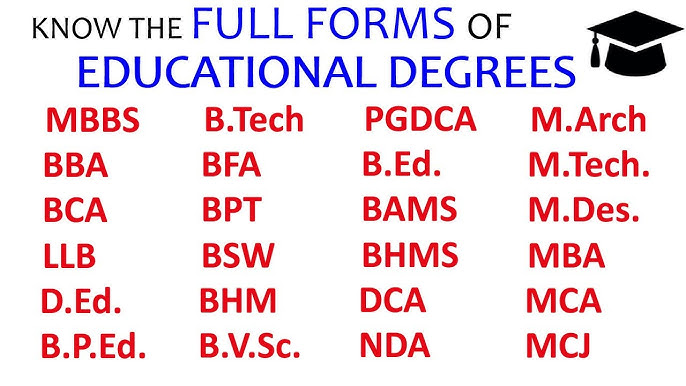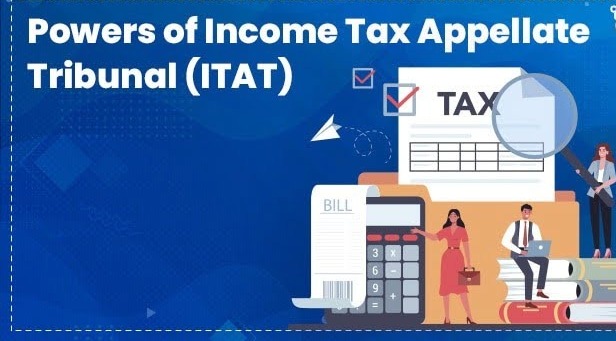G. P. Mathur, J.@mdashThis petition under Article 226 of the Constitution has been filed praying for the following reliefs :
1. issue a writ, order or direction in the nature of certlorari calling for the record and quashing the proceedings initiated under assessment order dated 1.9.1999 ;
2. issue a writ, order or direction in the nature of mandamus commanding the respondents not to assess or realise any amount from the petitioner in pursuance of the assessment order dated 1.9.1999 which in turn is based on the alleged ex parts checking report dated 23.8.1999 :
or in alternative
3. issue a suitable writ, order or direction in the nature of mandamus, directing the respondents that the assessment proceedings in the present case be finalised by the Executive Engineer posted sutside Bareilly.
2. The petitioner No. 1 M/s. Bareilly Flour Mills (Pvt.) Ltd.. is a company incorporated under the Companies Act and it has established a unit in village Zerh Tehsil Faridpur in the district of Bareilly. It has been sanctioned a load of 500 KVA by U. P. State Electricity Board (for short UPSEB) in the year 1989. The UPSEB has installed an Electronic Secured Meter which is an electronic device for measuring the amount of electricity which is supplied to the petitioner No. 1. This Electronic Secured Meter is supplied by a company and the reading in the same is recorded by a nominee of the company who conducts an inspection once in a month along with an Engineer of UPSEB. This process of recording the consumption of electricity is commonly known as M.R.I. At 15.20 hours on 23.8.1999, a team consisting of Sri Atul Rastogl, nominee of the company which had supplied the Electronic Secured Meter. Sri J. P. Gupta, Assistant Engineer (Meter), Sri M. 1. Halder (J.E.). Sri Ghanshyam and Sri Munshi Lal. employees of UPSEB went to the premises of petitioner No. 1 for the purpose of M.R.I. They found that a cable had been directly connected from the 11 KVA line to the transformer installed there and the cable which connects the meter to the transformer had been disconnected. The result of this directly connecting the main 11 KVA line to the transformer was that no electricity was passing through the meter and no consumption of the same was being recorded therein. The petitioner No. 1 was thus committing theft of the electricity. Sri J. P. Gupta. Assistant Engineer gave information about it to his superior officers. Subsequently, on 24.8.1999 the electricity connection of petitioner No. 1 was disconnected. The Divisional Engineer (Executive Engineer), Electricity Distribution Division, Bareilly, thereafter sent an assessment bill for an amount of Rs. 77,23,095.00 dated 1.9.1999 to the petitioner No. 1. The petitioner seeks quashing of this assessment bill.
3. We have heard Sri V. B. Upadhaya, Senior Advocate assisted by Sri Arun Tandon for the petitioners and Sri Sudhlr Agrawal for respondent Nos. I to 3 and have perused the record.
4. Learned counsel for the petitioners has contended that the petitioner No. 1 had been sanctioned" a load of 500 KVA in the year 1989. Subsequently, on 20.5.1999 the petitioner No. 1 moved an application for reduction of load from 500 KVA to 150 KVA and thereafter Executive Engineer, Electricity Distribution Division, directed the Sub-Divisional Officer to check the installation of petitioner No. 1 and to ascertain the number of motors installed therein for the purpose of reduction of load. The petitioner was informed that as per the M.R.I, of the sub-station, the consumption of electricity appeared to be more than one recorded at the meter Installed in the Flour Mill and consequently an objection was raised that on the basis of M.R.I. of the substation from where electricity was supplied to many industries, no bill should be raised against the petitioners. On the basis of the complaint of the petitioners, the Zonal Chief Engineer constituted a Committee consisting of Superintending Engineer, three Executive Engineers and Assistant Engineers, who made physical inspection of the Flour Mill on 18.8.1999 and after being satisfied that there was no misutilisation or misapplication of the electrical energy submitted a sealing report dated 18.8.1999. This showed that no theft of electricity was being committed by the petitioner. Learned counsel has further contended that a report about the alleged theft was also lodged with the police who. after investigation, has submitted a report to the effect that no theft of the electricity had been committed. Lastly, it has been contended that the inspection is alleged to have been done in the presence of Sri R. P. Singh (Superintending Engineer) as well as officers and employees of Vigilance Cell and consequently the Executive Engineer who had sent the assessment bill cannot act fairly while finalising the assessment bill as he cannot disregard the report of Sri R. P. Singh, Superintending Engineer, as he is a superior officer. It is thus urged that this Court should intervene In the matter and quash the assessment bill as from the material on record the commission of theft by the petitioner No. 1 is not established.
5. Sri Sudhir Agrawal. learned counsel for the contesting respondents has, however, submitted that the report of Sri J. P. Gupta, Assistant Engineer, which had also been signed by Sri Atul Rastogi, nominee of the company which has supplied the Electronic Secured Meter, besides Sri M. I. Haider. J.E.. Sri Ghanshyam and Sri Munshi Lal clearly showed that a cable had been directly connected with the 11 KVA line to the transformer installed In the Flour Mill by-passing the meter. Learned counsel has also contended that there is other strong evidence which conclusively establishes that petitioner No. 1 had committed theft of electricity. Regarding the assessment bill, it has been urged that the same has been prepared by Sri Shashl Kant. Executive Engineer (Revenue) and he was not a member of the team which had conducted the Inspection and no allegation of any kind has been made against him in the writ petition, Sri Agrawal has further submitted that the assessment bill is only provisional in nature, which has to be finalised after giving an opportunity of hearing to the consumer and against the final bill, an appeal lies under the Regulations and, therefore, this Court should not exercise its discretionary jurisdiction under Article 226 of the Constitution at the present stage. The question whether a theft was being committed by directly connecting a cable with 11 KVA line with the transformer Installed In the Flour Mill Is a pure question of fact. It Is not possible for this Court to record any finding on this question while exercising jurisdiction under Article 226 of the Constitution. It is for the concerned Authority of UPSEB to consider the material and circumstances of the case and record a finding on this question. The report of the police station, Faridpur, submitted to S.S.P. Bareilly, copy of which has been filed as Annexure-9 to the writ petition, has hardly any evidentiary value. The only reason given therein is that it is not possible to run a Mill by directly connecting a cable with 11 KVA line. The report dated 23.8.1999 given by Sri J. P. Gupta, Assistant Engineer, which has also been signed by Sri Atul Rastogi, nominee of the company which had supplied the Electronic Secured Meler, Sri M. 1. Hatder, Sri Ghanshyam and Sri Munshi Lal, mentions that they had personally seen that a cable had been connected from the 11 KVA line to the transformer of the Flour Mill bypassing the meter. Besides above, the M.R.I, done in the sub-station from where electricity is supplied to petitioner No. 1 and the number and capacity of the motors installed therein can also give clinching evidence on the point whether theft of electricity was being committed or not. This question has, therefore, to be examined by the experts of the department and it is not possible for this Court to record a finding in favour of petitioner only on the basis of the seating report dated 18.8.1999 and the police report.
6. Annexure-11 to the writ petition is a copy of the assessment bill dated 1.9.1999 and it has been sent to petitioner No. 1 by an Executive Engineer of UPSEB. The bill itself mentions that if the petitioner has any objection to the assessment bill, it may file a written objection along with proofs within 15 days of the receipt of the assessment bill failing which the same shall be deemed to be final. This assessment bill has been prepared under clause 22 of Electricity Supply (Consumers) Regulations, 1984. Clause B of this Regulation relates to theft of energy and it provides that where there is evidence that a consumer had dishonestly abstracted, consumed, used or wasted energy, the supplier may estimate the value of the electrical energy so abstracted, consumed or used as per guidelines given in Annexure-1 and may also disconnect the supply without notice. Towards the. end of the Regulation, Annexure-1 has been given which provides the guidelines for assessment. The assessment bill appears to have been prepared in accordance with the Regulations contained in Annexure-1. Regulation 23 (i) provides that the Executive Engineer shall finalise all the assessment cases after giving an opportunity to the consumer to state his point of view. Sub-clause (ii) of clause 23 lays down that if the consumer is dissatisfied with the assessment so made, he may prefer an appeal. Under the amended Regulations, if the assessment bill is upto Rs. 2 lakhs, the appeal lies to a Circle Level Committee headed by Superintending Engineer, if the assessment bill is above Rs. 2 lakhs and is upto Rs. 10 lakhs, it lies to a Zonal Level Committee headed by a Chief Zonal Engineer and if the assessment bill exceeds Rs. 10 lakhs the appeal lies to an Area Level Committee headed by Area Chief Engineer (Level-1). As mentioned earlier, only an assessment bill has been issued to the petitioner on 1.9.1999 and this itself mentions that if the petitioners object to the same they may file a written objection along with proof within 15 days falling which the assessment bill shall be deemed to be final. The petitioners had an opportunity to file an objection against the assessment bill and thereafter a final bill would have been prepared. Against the final bill the petitioners have a right to file an appeal. Thus, the statute Itself provides an efficacious and alternative remedy to challenge the assessment bill dated 1.9.1999.
7. Learned counsel for the petitioners has urged that at the time of the inspection Sri R. P. Singh, Superintending Engineer as well as officers and employees of Vigilance Cell were present and, therefore, no useful purpose will be served by filing objection to the assessment bill and consequently the alternative remedy provided under the Regulations is illusory in character. In support of this submission, reliance is placed on
8. In view of the discussions made above, the writ petition is dismissed on the ground of alternative remedy. It is however directed that if the petitioners file an objection to the assessment bill within 15 days from today, the Executive Engineer concerned shall entertain the same and finalise the assessment case after giving an opportunity to the petitioners to state their point of view and in accordance with law.
9. Office is directed to issue a certified copy of this order on payment of usual charges within three days.

